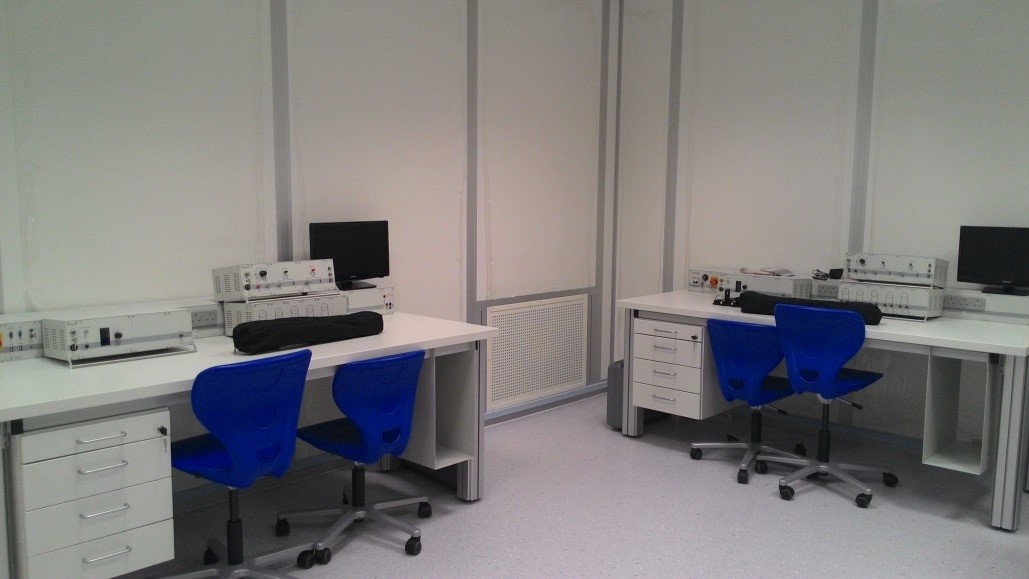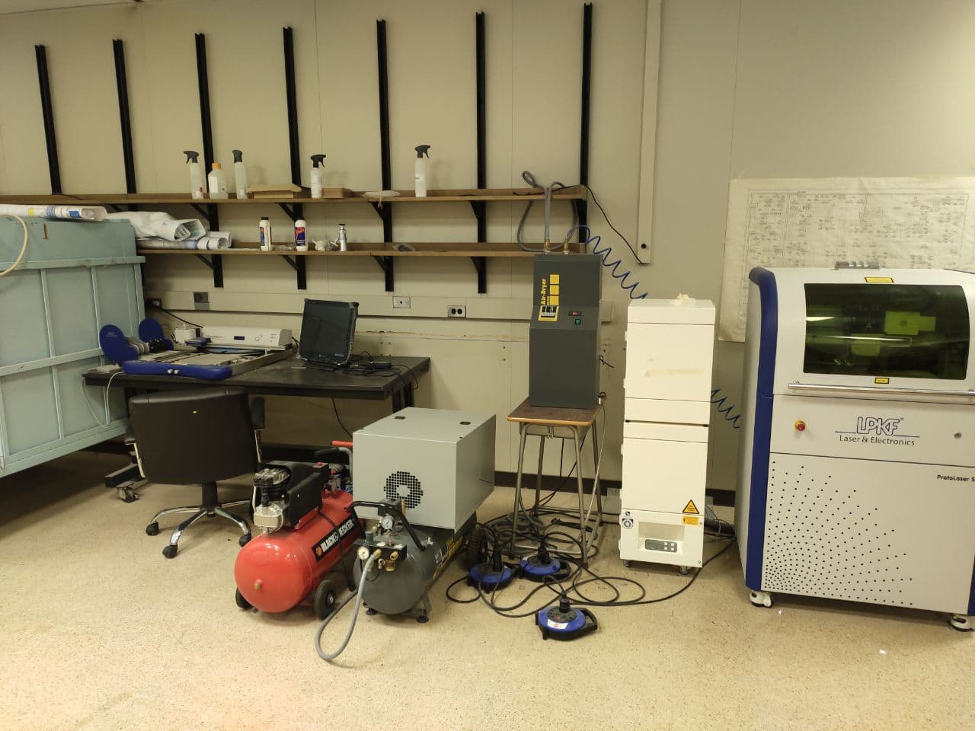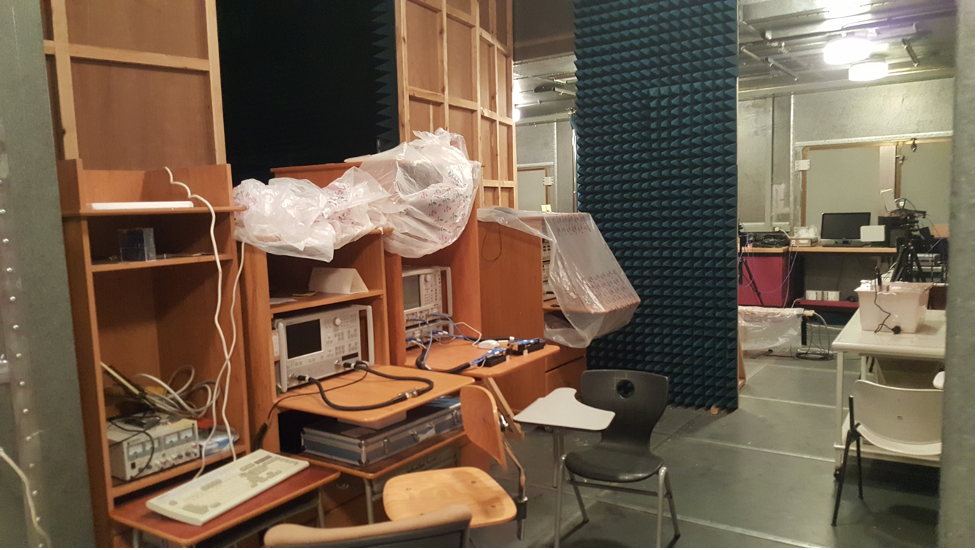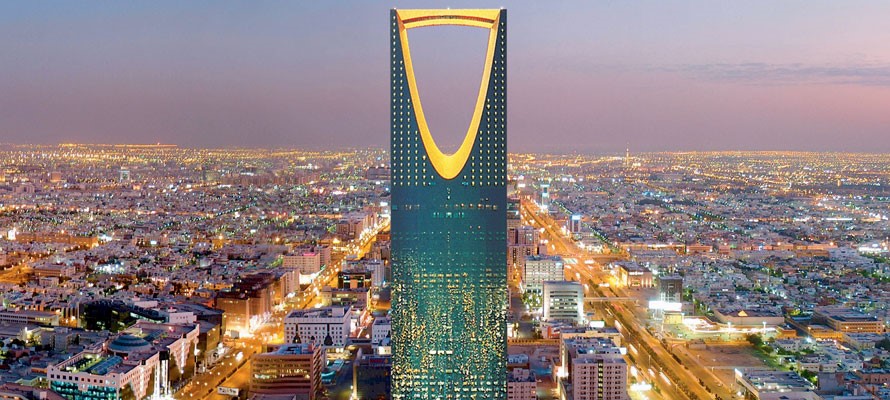Vision
The journal should be a pioneer in the field of scientific publishing specialized in engineering sciences
The journal should be a pioneer in the field of scientific publishing specialized in engineering sciences
Journal of King Saud University – Engineering Science is a peer-review journal that is listed now in SCOPUS indexing. The journal used to be published by "King Saud University Press" in two issues per year. From 2011G the journal was hosted and published by the international publisher “Elsevier“and become online on Science direct. Starting in 2019G, the journal published Eight Issues Per year. The journal publishes all articles in all engineering and related fields.
I would like to thank all Authors and reviewers who contribute to the journal from King Saud University or outside. The journal welcomes your valuable suggestions/Comments any time regarding the performance of the journal.
LABORATORY EQUIPMENT
|
Laboratory |
Equipment |
|
Electronics Circuit Laboratory |
Oscilloscope Function Generator Three-phase Transformer DC Power supply Variable AC power supply Digital Wattmeter Digital Multimeters |
|
Optical Communications Lab
|
Oscilloscope. Optical Spectrum Analyzer. Optical Power Meter, Fiber Splice machine |
|
Electrical Machine lab |
DC separately excited machines DC series machines DC shunt machines Universal motors Linear motors AC single phase split phase induction motors AC single phase capacitor-start-capacitor-run induction motors AC three phase induction machines – wound rotors AC three phase induction machines – cage rotors Three phase synchronous machines Facilities for parallel operations of synchronous generators Magnetic powder brakes (Torque units) Different types of electrical loads- resistive, inductive, and capacitive loads. Modern oscilloscopes Twelve modern designed experimental benches with flexible instruments positioning. Single and three phase transformers Single and three phase variable transformers DC and AC supplies Universal inverters for drives Data acquisition and control interface for computer simulations. Thyristors, diodes, triacs, single phase and three phase firing circuits. Data show for seminars, trainings and presentations. A library of students research projects. Modern analog and digital measuring instruments such as ammeters, voltmeters, wattmeters, and multimeters. |
|
Communication Lab |
Oscilloscope Analog and Digital, Power Supply, Function Generator , Multimarer analog And Digital, volt Analog and Digital Communication Training Systems From LD |
|
Microwave Lab |
Network Analyser upto 145GHz, Time domain radiation pattern measurements upto 18GHz, anechoic chamber till 18GHz, Frequency Counter, Spectrum Analyzer, RF Generator, SWR Meter, Power meter, Optical power meter, different set of educational set - Microwave, Antenna. |
|
Microprocessor/Microcontroller Lab |
24 PC’s Dell Pentium 4 (Win 7 32 bit), 18 Flight 86 (CPU 8086) Hardware kits, 40 Microcontroller Training Sets, 40 Breadboards, 12 PC Based Logic Analyzer LA1132P, 17 Pic24HJ128GP502 Microcontroller kits |
|
High voltage |
A.C. power frequency test equipment 200 kV Impulse voltage generator 1000 kV, 40 kJ D.C. supply 100 kV Partial discharge detection system Schering Bridge for measuring of capacitance and tan delta |
|
Electronics Lab Equipment
|
Analog Oscilloscopes Digital Oscilloscopes Signal generators Power Supplies Hand-held Digital Multimeters Bench Digital Multimeters Center-tapped transformers Curve Tracers LCR meters Resistance Decade Boxes Capacitance Decade Boxes Welding Kits Solderless Breadboards Rastered Socket Panels Various Training Kits Various electronic components (ICs, BJTs, MOSFETs, Diodes, Resistors, Capacitors, Inductors, etc.) Personal Computers loaded with software for electronic circuits simulation
|
|
Automatic Control Laboratory (Control and Instrumentation Laboratory)
|
TPS Panels conveyor system Sensors kit Sensors modules Microcontroller kit Ni ELVIS 100 Ms/S Ni data acquisition system QNET DC Motor CONTROL Trainer Measurements panels PLC Function generators Multimeters Computer device with LCD Motnitor Speaker Printers Scanners |
|
Power Simulator Lab |
Electrical Power System Simulator Model TQ 2970 made in UK. PTI Software PSCAD Software ETAP Workstation RTP Signal Generator Equipment Relay Testing Equipment |
|
SAR Assessment Lab(Research Lab) |
The lab is used to characterize the human exposure to electromagnetic fields. Specific absorption rate SAR is measured in SAM phantoms. A robotic arm is used to scan the field probe. Human tissue simulating liquids are used in the analysis |
OPTICAL COMMUNICATIONS LABORATORY

Lab Description:
This is a new under-construction laboratory that will be equipped with advanced modern equipment in order for teaching and advanced research in the field of Light wave Technology and Optical Communication networks.
Undergraduate students will be served by this laboratory in different courses including Optoelectronics and Communication systems in addition to their senior gradation projects in the field of optical fiber communications and technologies.
This new lab is also intended to provide an appropriate environment for Master and PhD candidates in advanced fiber optic communication systems and subsystems. This includes Fiber-to-the-Home, Wavelength division multiplexing, Optical code division Multiplexing, next generation ultra-high speed and all-optical TDM and Ethernet technologies.
MICROWAVE LABORATORY


Lab Description:
This laboratory helps the student in each of the design, simulation, fabrications and measurements of Microwave circuits. The Lab will help each of the undergraduate students and the teaching staff for their researches. This lab is well equipped with a microwave measurement system, Network Analyzer upto 145 GHz and an anechoic chamber up to 18 GHz. Also we have a time domain antenna radiation pattern set up to 18 GHz. Undergraduate students will be served by this laboratory in their course project. This lab is also intended to provide an appropriate environment for Master thesis work, PhD thesis work and also faculty research in the field of Microwave and Millimeter wave systems.
Computer Center
About Computer Center
The College Computer Center facility was established in the academic year 1393/1394 AH (1973/1974 G). The computer center facility provides computer labs and technology-rich classroom space for students, faculty and researchers in the College of Engineering, King Saud University.
ACCREDITATION VISITS SCHEDULE
November 2015, ABET Accreditation Visit
April 2015, NCAAA Accreditation Visit
MS Virtual Visit
PhD Virtual Visit
ABOUT RIYADH
Riyadh ( ar-Riyāḍ means "The Gardens") is the capital and largest city of Saudi Arabia. It is also the capital of Riyadh Province, and belongs to the historical regions of Najd and Al-Yamama. It is situated in the center of the Arabian Peninsula on a large plateau, and is home to 5.7 million people, and the urban centre of a region with a population of close to 7.3 million people.

The city is divided into 15 municipal districts, managed by Riyadh Municipality headed by the mayor of Riyadh, and the Riyadh Development Authority, chaired by the governor of Riyadh Province, Faisal bin Bandar Al Saud.
From the 1940s, Riyadh "mushroomed" from a relatively narrow, spatially isolated town into a spacious metropolis. When King Saud came to power, he made it his objective to modernize Riyadh, and began developing Annasriyyah, the royal residential district in 1950. Following the example of American cities, new settlements and entire neighborhoods were created in grid-like squares of a chess board created and connected by high-performance main roads to the inner areas. The grid pattern in the city was introduced in 1953. The population growth of the town from 1974–1992 averaged 8.2 percent per year. Riyadh is divided into fifteen branch municipalities in addition to the Diplomatic Quarter. Each branch municipality in turn contains several districts, amounting to over 130 in total, though some districts are divided between more than one branch municipality. The branch municipalities are Al-Shemaysi, Irqah, Al-Ma'athar, Al-Olayya, Al-Aziziyya, Al-Malaz, Al-Selayy, Nemar, Al-Neseem, Al-Shifa, Al-'Urayja, Al-Bat'ha, Al-Ha'ir, Al-Rawdha, and Al-Shimal ("the North"). Olaya District is the commercial heart of the city, with accommodation, entertainment, dining and shopping options. The Kingdom Center, Al Faisalyah and Al-Tahlya Street are the area's most prominent landmarks. The centre of the city, Al-Bathaa and Al-Dirah, is also its oldest part.
Riyadh is classified as having a hot desert climate temperatures during the summer months. The average high temperature in August is 43.6 °C. Winters are warm with cool, windy nights. The overall climate is arid, and the city experiences very little rainfall, especially in summer, but receives a fair amount of rain in March and April. It is also known to have many dust storms. The dust is often so thick that visibility is under 10 m (33 ft). In April 2015, a massive dust storm hit Riyadh, causing suspension of classes in many schools in the area and cancellation of hundreds of flights, both domestic and international.
Football is the most popular sport in Riyadh. The city hosts four major football clubs, Al-Hilal, which is the most widely supported club in Saudi Arabia, was established in 1957 and has won thirteen championships in the Saudi Premier League. Al-Nasr club is another team in the top league that has many supporters around the kingdom. It was established in 1955, and has been named champion of the Saudi League seven times. Another well-known club, Al Shabab, was established in 1947 and holds six championships. There is also Al-RiyadhClub, which was established in 1954, as well as many other minor clubs. The city also hosts several large stadiums such as King Fahd International Stadium with a seating capacity of 70,000. The stadium hosted the FIFA Confederations Cup three times, in the years 1992, 1995 and 1997. It also hosted the FIFA U-20 World Cup in 1989.
Riyadh's King Khalid International Airport, located 35 kilometers north from the city center, is the city's main airport, and serves over 17 million passengers a year. Plans are being made to expand the airport to accommodate for 35 million passengers.
The city is served by a modern major highway system. The main Eastern Ring Road connects the city's south and north, while the Northern Ring Road connects the city's east and west. King Fahd Road runs through the center of the city from north to south, in parallel with the East Ring Road. Makkah Road, which runs east-west across the city's centre, connects eastern parts of the city with the city's main business district and the diplomatic quarters. Saudi Railway Authority operates two separate passenger and cargo lines between Riyadh and Dammam passing through Hofuf, and Haradh. Two future railway projects connecting Riyadh with Jeddah and Mecca in the western region and connecting Riyadh with Buraidah, Ha'il and Northern Saudi Arabia are underway.
A metro has also been approved, with six lines planned with scheduled opening in 2019. The metro system will be integrated with an 85 kilometers (53 mi) three line bus rapid transit (BRT) network. The main charter bus company in the kingdom, known as the Saudi Public Transport Company (SAPTCO), offers trips both within the kingdom and to its Neighboring countries of Gulf states, including Egypt (via ferries from Safaga or Nuweiba).
JOB OPENINGS
Open Rank Faculty Position in the Department of Electrical Engineering
Electrical Engineering department is pleased to invite applications for faculty positions at all ranks (Assistant, Associate, and Full Professors) .
Applications are specifically sought in any of the areas that fall under the umbrella of electrical engineering, with particular emphasis on, but not limited to: Power, Electronics and control engineering. Candidates must have a Ph.D. or its professional equivalent with 2 years of Post doc experience for the position of Assistant Professor. Applicants for Associate or Full Professor must have a demonstrated record of outstanding research accomplishments, excellent teaching credentials and established leadership in the field.
The successful candidate is expected to contribute to the advancement of their field and the department by developing an original and leading externally funded research program, and to contribute to the undergraduate and graduate educational mission of the Department. The Department is especially interested in qualified candidates who can contribute, through their research, teaching, and/or service, to the diversity and excellence of the academic community.
Applications should be submitted electronically to chair_ee@ksu.edu.sa, and include the following documents:
1. Curriculum-vitae including a publication list
2. A description of research accomplishments
3. A statement of research and teaching interests and plans
4. Contact information for three experts who can provide letters of recommendation
5. Up to three pre/reprints of scholarly work
More information about the EE academic program and research activities are available at /en/EE
Due to the high volume of applications, only applicants who succeeded will be contacted.